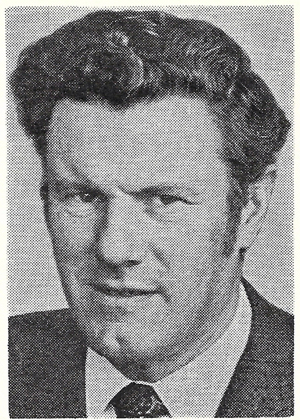
The shape and sound of language
Chapter 2 from the book ‘A journalist’s guide to the use of English’
STYLE DIFFERS FROM SENTENCE CONSTRUCTION (SYNTAX) in that it cannot be quantified; it has no precise rules. This is inevitable because style is concerned not so much with the mechanics of English as with the manner in which the writer uses language to play on the sensations of the reader. Style is concerned with the shape and sound of language. It adds impact to writing, strengthens the contact with the reader and heightens awareness. Even though the reader may be oblivious of what is happening and unable to analyse the techniques that are being used, the sense of enjoyment is enhanced.
However, while style does not have precise rules of its own, it must be based on those rules of syntax which give shape and design to our use of English. And, the more elaborate the style, the greater are the demands made on the writer’s grasp of good grammatical construction.
For example, the novelist Francis Brett Young was a lover of the long sentence. A sentence of his might run to well over 100 words and in some cases exceed 150. But the reader never gets lost, because the balance and shape of the sentence is so carefully constructed that it offends none of the rules of syntax. And that, after all, is the purpose of syntax: to enable the writer to communicate with his reader. Syntax, therefore, is the foundation on which good style is built. Some of the more common pitfalls will be discussed later. Meanwhile, there are some considerations about style which may usefully be examined.
To be effective as a communicator, a writer must develop an ability to select a style which has four principal attributes: suitability, simplicity, precision and poise.
Suitability
THE MANNER of writing must be appropriate to the nature of the subject, to the mood and pace of the events that are being recalled and to the needs of the reader. The style must arouse the interest of the reader and maintain that interest throughout. It must also present the facts or arguments in a manner that enables the reader to understand them quickly and easily.
The Roman statesman and lawyer Cicero, who did so much to shape the style of his own language, and consequently those languages which are derived from Latin, was one of the most compelling communicators of all time. He perfected a style which could scarcely fail to captivate his audiences, so skilfully did he combine clarity, flexibility and euphony.
This is what he had to say about style:
“Whatever his theme he will speak as becomes it; neither meagrely where it is copious, nor meanly where it is ample, nor in this way where it demands that; but keeping his speech level with the actual subject and adequate to it.”
Cicero was discussing the spoken word but the import of his message is just as germane to the written word. And it is as precise a definition as one can achieve of such an abstract idea. The key phrases are level with the actual subject and adequate to it.
However, while suitability is an abstract concept, there are a few pointers that can be expressed :
1. If the subject is grave, it must not be treated with anything that suggests levity.
2. If the subject is amusing, it may be treated lightly, or with mock severity (e.g. where the punch-line produces an amusing climax or anti-climax, said to be the “delayed drop” story).
3. Whatever the subject, the writer should not needlessly offend the reader’s susceptibilities. This means avoiding any note of cynicism or facetiousness where the story deals with sincerely-held beliefs, however bizarre those beliefs may appear to the writer.
4. Where a story recalls events which have action and movement, the style should suggest pace. This calls for terse expression, the avoidance of too many adjectives, the use of direct and active verbs, and crisp, taut, sentence construction.
5. Where a story deals with a sequence of events, a straightforward narrative style is often the best. However, there are two points that require attention. If one episode is taken out of context to create impact in the intro, make sure that it is briefly repeated in its proper time context. Secondly, make sure there is a consistent use of tenses in reporting events chronologically.
6. If the events recalled in a story are stark and horrific, resist the temptation to over-write. The events themselves will make sufficient impact. Any attempt to add to the horror may lead to banalities or cliches; e.g. the phrase like a battlefield to describe a multiple crash does nothing to heighten awareness.
7. Whatever the story, don’t rhapsodise. Whenever a story plays on the emotions-whether those emotions be joy or sorrow, humour or pathos-understatement is more effective than overstatement.
8. Where the story requires some scene-setting, there is scope for thoughtful word-painting. Consider this example by Arthur Hopcraft writing in UK national newspaper The Guardian. The piece is from a bygone era but evocative enough to still resonate.
“They moved Sorensen’s cross at dusk, when the streets were still, lifting the darling immensity of it, all of a piece, over Sorensen’s hedge and laying it with care fit for a corpse on the two flat trailers behind the tractor. They trundled it up the short, steep hills and huffed it and swore it round the short, tight turns. They stopped at Carr’s Hill, which has always been called Carr’s Hole, and there they stood it upright among the clods and tufts and mushy hollows that mark the graves of old Ireland’s anguish.”
That style certainly plays on the sensations. It captures scene and mood and has a marvellous impact. It screams: “Read on”.
Simplicity
THE HALLMARK of any great prose is its simplicity. If you look back at the extract from THE GUARDIAN and study it, you will see that this quite sophisticated piece of writing is in reality a piece of simple prose. Apart from the name Sorensen and the one word immensity, there is no word with more than two syllables in a passage of almost 100 words.
The sentences are not short; indeed, the opening sentence has over 40 words. Yet, they are easy to read, because they are nowhere convoluted with clumsily contrived subordinate clauses.
Moreover, the language, although figurative in places, has a directness about it which ensures that the whole piece moves at an energetic pace. This is achieved by the use of direct, active verbs.
Directness is, in fact, one of the fundamental ingredients of simple prose. Brevity, on the other hand, is not the same thing as simplicity, but it does contribute towards it.
From this one example certain useful guidelines emerge and others may be added:
1. Prefer the short word to the long one.
2. Prefer the concrete statement to the abstract.
3. Prefer the direct statement to any form of circumlocution.
4. Be firm in avoiding words or phrases simply because they sound good, if they do not develop the theme.
5. Avoid pomposity at all costs.
6. Remember that a sentence must have at least one finite verb, and that this is the most important word in the sentence.
7. As a general rule, choose transitive verbs and use them in the active voice. The passive voice slows down the pace and clutters the sentence with prepositions and a lot of little is and was auxiliaries.
N.B.-It is particularly important to avoid the passive voice in intros and headlines although there are exceptions. (Eg. Kennedy shot is better than Assassin shoots Kennedy because Kennedy is the strongest word for the subject.)
However, there are occasions where the headline is inverted simply to fit the count, when it would be better to change the size of type, or the shape of the headline.
E.g. JONES IS JEERED BY STRIKERS
would be better recast as the more direct:
STRIKERS JEER JONES
thus obviating the use of the auxiliary is and the preposition by.
8. Choose adjectives with great care and be economical in their use. Avoid tautology (e.g. a new innovation).
9. Prefer the short sentence to the long one, particularly in the intro. Apart from having the virtue of directness, the short sentence also has typographical advantages.
As a general rule, aim for a sentence of 20-25 words as a maximum. On the other hand, don’t make a fetish of short sentences. Eight sentences of 12-15 words may be all right in a short news story, but to stick to sentences of such brevity in an article of 1,000 words would not help the reader at all. Such a staccato style lacks fluency and could impede understanding. The ideal in long articles is to strike a balance between short and medium length sentences.
10. Avoid complex statements where too many subordinate clauses, or descriptive phrases, prevent the flow of language.
The most common pitfalls in sentence construction occur in compound sentences, where participles are misrelated, or non-sequiturs are inadvertently created.
Ensure, therefore, that whenever an idea or situation requires explanation by resort to a compound construction, each subordinate phrase or clause is clearly related to the principal statement.
Precision
ENGLISH is a language of richness and variety. But indiscriminate use of words, simply because so many exist, inhibits precision. And precision is paramount in reporting, for clarity and accuracy both depend upon it.
In order to be precise in writing it is necessary to know the exact meaning of words. Words must fit easily into the sense and context of both the sentence and the story as a whole. It is no use choosing a dramatic, highly evocative word, which sounds fine in isolation, if it is over-emphatic or ill-attuned to the story.
Approximation is the antithesis of precision. If the writer is content with being nearly right about the odd word or phrase, the results will always fall below the best standard.
So, primarily, the journalist needs a good and comprehensive vocabulary. Without such a vocabulary the writer should not be in journalism where the very business is all about words.
Study words and their meanings, for a knowledge of derivation helps a writer to be exact in his word usage.
Avoid gimmicky language and be careful about the use of colloquialisms. These may have a place in a direct quotation (provided that they do not make the speaker look foolish) but they should be used with care in general reporting.
The spoken word has accepted speech patterns that are out of place in written prose. “Estuary English” may be all right on radio and television, but it has no place in our newspapers.
Precision also depends on accurate sentence construction, for faulty syntax can invert a meaning or, at least, make the meaning ambiguous.
Do not leave it to the sub-editor or proof reader to spot inaccuracy or ambiguity. Read your own copy and ask: “ Do I mean what I say and have I said what I mean?” Often the honest answer will be “No”. And, if you pass that self-imposed test, ask: “So what?” Often you will find that the story does not go far enough in saying what happens next. Remember the reader wants to know precisely what is happening.
The headline writer should also think carefully before deciding on the most suitable choice of words. A synonym may be required because the obvious first choice of words does not fit the designated space. Two, or even three words may need to be changed before the headline fits. However, unless the synonyms are exact they may change the precise meaning of the headline. So, finally, ask yourself:
“Does the headline tell the story?” Sometimes the answer will be “No”, and the headline will need re-writing.
Be particularly careful with headline words where the active and passive voice take the same form.
E.g. LANDLORD OWED £50,000
This is dangerously ambiguous. Was the landlord owed £50,000 or did he owe £50,000?
Poise
POISE is the absolute essence of style, for it is this which transforms a piece of writing from something which may be dull and pedestrian into prose which has a sheen of its own.
By definition poise is concerned with equilibrium and in this context is related to the design and shape of language. It involves the creation of perfectly balanced, rhythmical, sentences to give perspective to the pattern of writing. It relies on the unusual word or phrase used exactly in context to add sparkle to the picture that is created. In this way it heightens the reader’s insight by appealing to his or senses through images which have an extraordinarily vivid appeal.
Often this imagery involves using literary tricks, known as figures of speech, to add lustre to the prose. Not all figures of speech have a place in newspaper journalism but there is a place for some, provided that they are used with care and restraint. The secret is that the imagery should not obtrude. In the best prose, the reader remains unconscious of technique; he simply enjoys reading the passage.
The worn-out simile (e.g. like a battlefield) sticks out like a sore thumb (another cliche simile). The apt simile, however, adds savour, which the reader relishes.
The metaphor can also border on the banal. And there is always the danger of mixing them, like the politician who smelt a rat and sought to nip it in the bud.
But, for all that, both the simile and the metaphor have a use in painting word-pictures. Turn back to Hopcraft’s piece and you will find that there are two hidden metaphors hidden because they are metaphorical verbs rather than the more common noun-metaphor. The two verbs are huffed and swore. These are intransitive verbs. One cannot huff anything, any more than smile anything; one can swear an oath, but normally swear is used intransitively.
Hopcraft has used these verbs metaphorically in a transitive manner. And the effect is so much more direct than it would have been if he had written: “they huffed and swore as they pushed it round the short, tight turns “. The appeal is in the unusual use of words which are exactly right in context.
There are figures of speech which change the shape of a sentence, such as: Rome is no mean city. (The figure of speech is litotes) instead of Rome is a great city. But like the double negative and the inverted sentence these forms should be used very sparingly and only when they add to the effectiveness of the sentence.
Such figures of speech are primarily a means of evoking word pictures; they are related to the pattern and design of sentence construction. But above all, poise is concerned with the sound of language, for even when we are reading silently we “hear” the words and phrases that appear before our eyes.
So poise is as much a matter of aural sensation as it is of visual perspective. And, as such, it relies on the inter-play of sounds to give a melodic balance to the whole composition. That is why beautiful writing is mellifluous as much as it is perfectly proportioned.
The figures of speech that assist most in creating melodic lines are:
1. Assonance: the interplay of rhyming vowel sounds:
E.g. “0 my son Absalom, my son, my son, Absalom! Would God I had died for thee, 0 Absalom, my son, my son.” (2 SAMUEL 18: 33.)
Notice the interplay of the vowels O and I. This creates a melody and a rhythm which suggest poetry, but it is pure prose and very beautiful.
2. Alliteration: the use of words beginning with or containing the same consonant.
There is no better example than W. S. Gilbert’s:
“To sit in solemn silence,
In a dull, dark dock
In a pestilential prison
With a life-long lock,
Awaiting the sensation
Of a short, sharp shock
From a cheap and chippy chopper
On a big, black block.”
(THE MIKADO.)
3. Onomatopoeia: the formation of words whose sounds evoke the sound of the action or object named.
E.g. “ The moan of doves in immemorial elms
And murmuring of innumerable bees.”
(THE PRINCESS, Tennyson.)
It may be thought that these are devices which have no place in a newspaper. But we use them all the time. Consider the phrase “ splash-down “. This is an onomatopoeic description of a space capsule making a “ soft landing “ in the sea.
Alliteration and assonance also have their place but should be used with restraint. Re-read Hopcraft’s piece and you will see there is an interplay of vowel sounds; there are onomatopoeic words such as trundled, clods, mushy hollows; and the whole passage is rich in restrained alliteration:
“They moved Sorensen’s cross at dusk when the streets were still . . . .
… care fit for a corpse on the two flat trailers behind the tractor
… trundled it up the short, steep hills
. and swore it round the short, tight turns.”
The whole piece is full of imagery, and this helps to make it the fine writing which it is.
Notice also the repetition of the word short which gives the sentence a sense of equilibrium. This is an excellent example of a writer choosing the right word and sticking to it.
There is a convention that one should not repeat a word in the same paragraph or sentence. The use of an alternative is known as elegant variation.
As a general rule, this is a good practice for it prevents boring repetition, but the synonyms must be exact. If there is no exact synonym, stick to the original word. Call a spade a spade and stick to it. Do not call it a horticultural implement. That is an inelegant variation. And remember that, occasionally, deliberate repetition can be most effective.
In this essay on style, Hopcraft’s three sentences from THE GUARDIAN have been painstakingly analysed to illustrate several points concerning technique. But let us be quite clear that the good writer achieves these results because of a good feel for language and does not start with a determination to include a couple of apt similes, sprinkle in a few alliterative words and add a bit of assonance.
These things are all weapons which should be kept sharpened. They are part of an armoury acquired by wide reading and much practice in writing. They are then used instinctively and incisively to polish a phrase here, searches for the exact word there. They are successful because they are used without strain.
The results in the hands of the unskilled practitioner are that analogy is forced, allusion is less than apt and figurative language gilds the lily so lavishly as to obscure the meaning or to jar on the reader’s sensitivity.
So beware the blunt instrument and the bluntest of all is the Pun. It is overworked and much abused. There is a place for this sort of play on words, but a very small place.
If the former England and Yorkshire cricketer Brian Close took a few wickets in any one match, the headline A Close haul would have been a very obvious and not very clever pun.
On the other hand, suppose Yorkshire had been fighting against the clock in a big match. Suppose the opposition needed only 40 runs in the last hour with seven wickets in hand. Suppose Close then went on to bowl and took all seven wickets with just two runs and four balls to spare. Then A Close haul would have been a valid headline, because it would be justified even if the bowler’s name were Smith. The fact that it was Close is what makes it a Pun.
Play on words clearly has a place in headline writing and those other arts — assonance, alliteration and onomatopoeia — can also be used to effect. But the watchword is restraint. A headline which strings together six words beginning with S will be less effective than one with a mixed pattern, such as S—S—T—S—S—T. This arrangement is asymmetrical; it is better balanced; it has more poise.
If you are in doubt about a headline, try it on a colleague. If you have to argue about it, then it is not so brilliant; if it is a masterpiece there will be no argument-only instant acclamation.
Finally, remember that poise is not an embellishment, a garnishing to add flavour. It is an integral part of composition, giving shape, balance and fluency to the whole construction, and adding impact by the skilful use of imagery.
Poise is elegance harmoniously achieved by the avoidance of excess.
Conclusion
STYLE has four attributes :
SUITABILITY SIMPLICITY PRECISION POISE
Each of these attributes helps the reader to understand and enjoy what is written.
If the style in any way inhibits direct communication with the reader, it diminishes the quality of the story and points to the failings of the writer.
We said earlier: “The journalist should be able to make the style match the mood of his subject. This means developing a professional polish in order that that the gifts of the writer are placed firmly at the service of the reader.” It bears repetition, for this is what journalism is all about. Words are our business and writing our way of life.
Revised by John Bottomley 2020
About this training module
Ted Bottomley and Anthony Loftus were both journalists and training managers at the Express & Star group of newspapers in the UK. The group has given this site permission to publish the module (above), which is one of six taken from the book ‘A journalist’s guide to the use of English’, first published in July 1971 but still relevant today. You can find links to all six chapters below.
 Ted Bottomley spent his whole working life in newspapers and more than 25 years in journalism. He was a former weekly newspaper editor, and had a long association with the National Council for the Training of Journalists. He was a member of the Publishing and Editorial Training Committee of the Printing & Publishing Industry Training Board. In the UK journalists still compete to try to win the prestigious ‘Ted Bottomley Award’.
Ted Bottomley spent his whole working life in newspapers and more than 25 years in journalism. He was a former weekly newspaper editor, and had a long association with the National Council for the Training of Journalists. He was a member of the Publishing and Editorial Training Committee of the Printing & Publishing Industry Training Board. In the UK journalists still compete to try to win the prestigious ‘Ted Bottomley Award’.
 Anthony Loftus was a high court reporter and film and music critic before becoming the Editorial Training Officer of the Express & Star group. He was a member of the Institution of Training Officers and the Association of Lecturers in Journalism, and the chair of the West Midlands Regional Training Committee of the National Council for the Training of Journalists.
Anthony Loftus was a high court reporter and film and music critic before becoming the Editorial Training Officer of the Express & Star group. He was a member of the Institution of Training Officers and the Association of Lecturers in Journalism, and the chair of the West Midlands Regional Training Committee of the National Council for the Training of Journalists.
You can read more about the book, the men behind it, and how it has been revised and updated by Ted Bottomley’s son, John, a newspaper journalist for 40 years.
The six chapters of ‘A journalist’s guide to the use of English’
- Chapter 1: The use of English
- Chapter 2: The essence of style
- Chapter 3: Word Power
- Chapter 4: Spelling
- Chapter 5: Syntax and sentence construction
- Chapter 6: Punctuation








